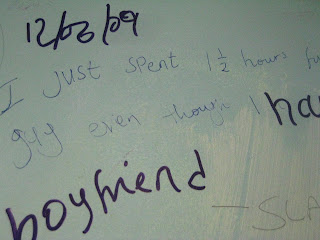







Following our course discussion about the body, media, cyborgs and the work of Stelarc and Orlan, I asked myself what kinds of other "body modifications” there are which may perhaps be more common and more accepted in our society. Then I had an opportunity to accompany a friend of mine as he was getting a new tattoo, and to document it.
For me tattoos are fascinating art objects, which have a strong power of expression. In different cultures tattoos are used for diverse purposes, for instance as religious or cultural signs to affiliate one with a specific group or culture. Tattoos are also used as body decoration and fashion statements, as it can be seen in different subcultures.
The shoot was the first time I saw the process of tattooing. When the tattooist started working, using a modern tattoo-machine, and I saw how the skin was being injured by this artificial machine, I felt strange. The mixture of this artificial liquid - an impurity with the blood of my friend's mixed in - evoked in me an urgent wish to wipe off the ink from the skin and stop any further mixing. However, this injection of the ink, which was an introduction of an impurity into the body, was purposeful. The realization that the alteration of the human appearance occurring in front of my eyes was permanent made the whole situation and atmosphere feel somewhat occult.
Furthermore, in relation to our last lecture about the archive of images, a connection to tattoos can be made here. The tatooed person becomes an image carrier as well as a story-telling medium. He or she thus functions as a moving archive, a unique visual media narrator. Of course the visibility of these signs and stories depends on the particular tattooed part of the body. The signs can either be shown to everyone or just to a selected group of people.
All in all, for me a tattoo is a symbol of the eternal wish of humankind to change and modify the body by using the technology of its time.




















































